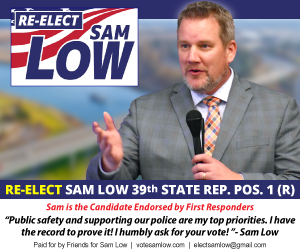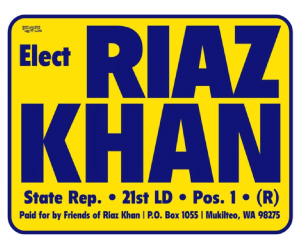By Police Chief Tom Davis | Lynnwood Police Department
I have received numerous questions about the Lynnwood Police Department related to our policies, training, data collection, and other topics as they relate to the horrific events in Minneapolis where a police officer killed George Floyd. As I stated in my original letter to our community, what happened in Minneapolis was abhorrent and I echo the urgent need to speak out against injustice. Police officers take an oath to protect the public – that means all members of the public. Our values of Professionalism, Vigilance, and Community do not discriminate. It is not enough for law enforcement agencies to say what happened was wrong. We must be willing to look within to ensure our policies and actions are carried out in such a way to fulfill our oath and our department’s core values. As you review the information below, I want to reiterate we are committed to providing a safe and welcoming city for everyone who lives, works, and visits our community.
The following is meant to provide information to our community related to the questions I have received. I felt it was important for this information to be available to the community at-large. There are links provided which will direct you to additional information related to these topics. It is, and has been, our goal to be transparent and responsive to our community in the provision of law enforcement services.
Frequently asked questions
Does your Use of Force Policy allow for chokeholds and strangleholds?
No. “Chokeholds” and “strangleholds” are, by their very definition, designed to restrict airflow. Because of the obvious danger, these types of holds were eliminated from our use of force policy years ago.
We do allow officers, if they have been trained and only in specific situations, to utilize a carotid control hold. This is substantially different from a chokehold in that it does NOT restrict airflow. Policy section 300.3.5 goes into the carotid control hold in more detail.
Does your Use of Force Policy require de-escalation?
Yes. Our policy provides clear guidance to our officers to utilize de-escalation tactics when practical.
Policy section 300.3.1 states “When safe, under the totality of the circumstances, and when time and circumstances permit, officers should use de-escalation tactics in order to reduce the need for force.”
Does your Use of Force Policy require a warning before shooting?
Policy 300.4 (b) addresses verbal warnings with respect to all deadly force encounters – not just shootings:
“An officer may use deadly force to stop a fleeing subject when the officer has probable cause to believe that the person has committed, or intends to commit, a felony involving the infliction or threatened infliction of serious bodily injury or death, and the officer reasonably believes that there is an imminent risk of serious bodily injury or death to any other person if the subject is not immediately apprehended. Under such circumstances, a verbal warning should precede the use of deadly force, where feasible.”
Does your Use of Force Policy require officers to exhaust all alternatives before shooting?
Our entire use of force policy is based on the concept that force, when applied by an officer, must be reasonable and necessary. Our policy specifically states the ultimate objective of every law enforcement encounter is to avoid or minimize injury. You might ask, how does an officer determine what is reasonable? Our policy lists several different factors for officers to consider when determining if force is necessary. For example, what is the subject’s mental state or capacity?, what is the subject’s age or size?, are there other options available? All of these factors are detailed in policy section 300.3.3 and are used by the officer(s) to determine if force is necessary and reasonable.
Does your Use of Force Policy ban shooting at moving vehicles?
No. It does not outright ban shooting at vehicles. We have a very detailed policy regarding shooting both at or from a moving vehicle.
Policy 300.4.1 states, “Shots fired at or from a moving vehicle are rarely effective. Officers should move out of the path of an approaching vehicle instead of discharging their firearm at the vehicle or any of its occupants. An officer should only discharge a firearm at a moving vehicle or its occupants when the officer reasonably believes there are no other reasonable means available to avert the threat of the vehicle, or if deadly force other than the vehicle is directed at the officer or others. Officers should not shoot at any part of a vehicle in an attempt to disable the vehicle.”
Does your Use of Force Policy include a duty to intervene provision?
Yes. Policy 300.2.1 states, “Any officer present and observing another officer using force that is clearly beyond that which is objectively reasonable under the circumstances shall, when in a position to do so, intercede to prevent the use of unreasonable force. An officer who observes another employee use force that exceeds the degree of force permitted by law should promptly report these observations to a supervisor.”
Does your Use of Force Policy require a “use of force continuum?”
The specific term “use of force continuum” refers to an outdated use of force model. As a state accredited agency, our use of force policy is grounded in the fundamental concepts of de-escalation and reasonableness. If force is necessary, then the officer uses only that amount of force that is reasonable given the facts and circumstances at the time of the event – and only for a legitimate law enforcement purpose. This is inline with current best practices in the policing profession.
Does your policy require comprehensive reporting?
Yes. To be a state accredited police department by the Washington Association of Sheriffs & Police Chiefs, agencies must ensure they meet a lengthy list of standards designed to ensure agencies are using best practices.
The Lynnwood Police Department has been a long-standing state accredited agency because we continue to meet these standards. One of those standards involves the reporting of force used by officers and it states that any force capable of causing injury has to be reported. We use a modern computer tracking system to ensure force events go through a robust review process to ensure compliance with our policy and this state standard. But higher levels of force are even further scrutinized; sometimes via a formal Board of Review process, or if necessary, an investigation by the Office of Professional Standards. In certain cases, such as an officer involved shooting, we can request the Snohomish County Multiple Agency Response Team (SMART) to conduct an independent investigation of the incident.
To read more about our reporting requirements check out section 300.5.1 and policy section 302 Boards of Review. Also see our 2018 Force, Pursuits, and Collisions Report in the Reports & Statistics section linked below under “More Information”.
Do your officers wear body cameras?
No. Currently, our officers are not equipped with body worn cameras.
The Lynnwood Police Department conducted a body worn camera pilot project in 2016. Since that time, we continue to analyze and discuss our ability to fully implement a body worn camera program. However, there is a wide range of budgetary, legislative, and privacy concerns associated with implementing these systems. Of note, is the aspect of public records requests involving recorded video. We continue to monitor the legislative action around this issue and connect with other local agencies that are implementing these systems. Currently, we do not have the staffing needed to redact the camera footage as part of a public disclosure request. As technology evolves, including the potential development of video redacting software, this process could become more manageable.
We are currently in budget preparation for the next two years and I strongly support the implementation and usage of these systems. Further, I commit to examine this issue as part of that process to determine if the budget would support the addition of a body worn camera program.
Is the Lynnwood Police Department a State Accredited Agency?
Yes. We have been an accredited police department for many years.
What does this mean? Being an accredited police department means we are operating under industry best practices and standards to include areas such as code of conduct, internal affairs, prisoner security, hiring, retention, training, discipline, de-escalation and use of force policies and procedures.
We re-accredited in 2017 and are up for re-accreditation every four years, so we will submit for re-accreditation in 2021. As part of the process we have to demonstrate that we meet almost 150 different standards to show we are in compliance with best practices and industry standards. We are one of 56 other agencies who are designated as an accredited agency in the State of Washington and I encourage you to learn more about the accreditation process by reviewing the Washington Association of Sheriffs & Police Chiefs (WASPC) website.
Additional Information
For links to the City of Lynnwood’s Police Department Manual, Workplace Diversity policy, Welcoming City Resolution and much more click here.
If you have additional questions or concerns, please contact Commander Sean Doty at sdoty@LynnwoodWA.gov or 425-670-5628



















